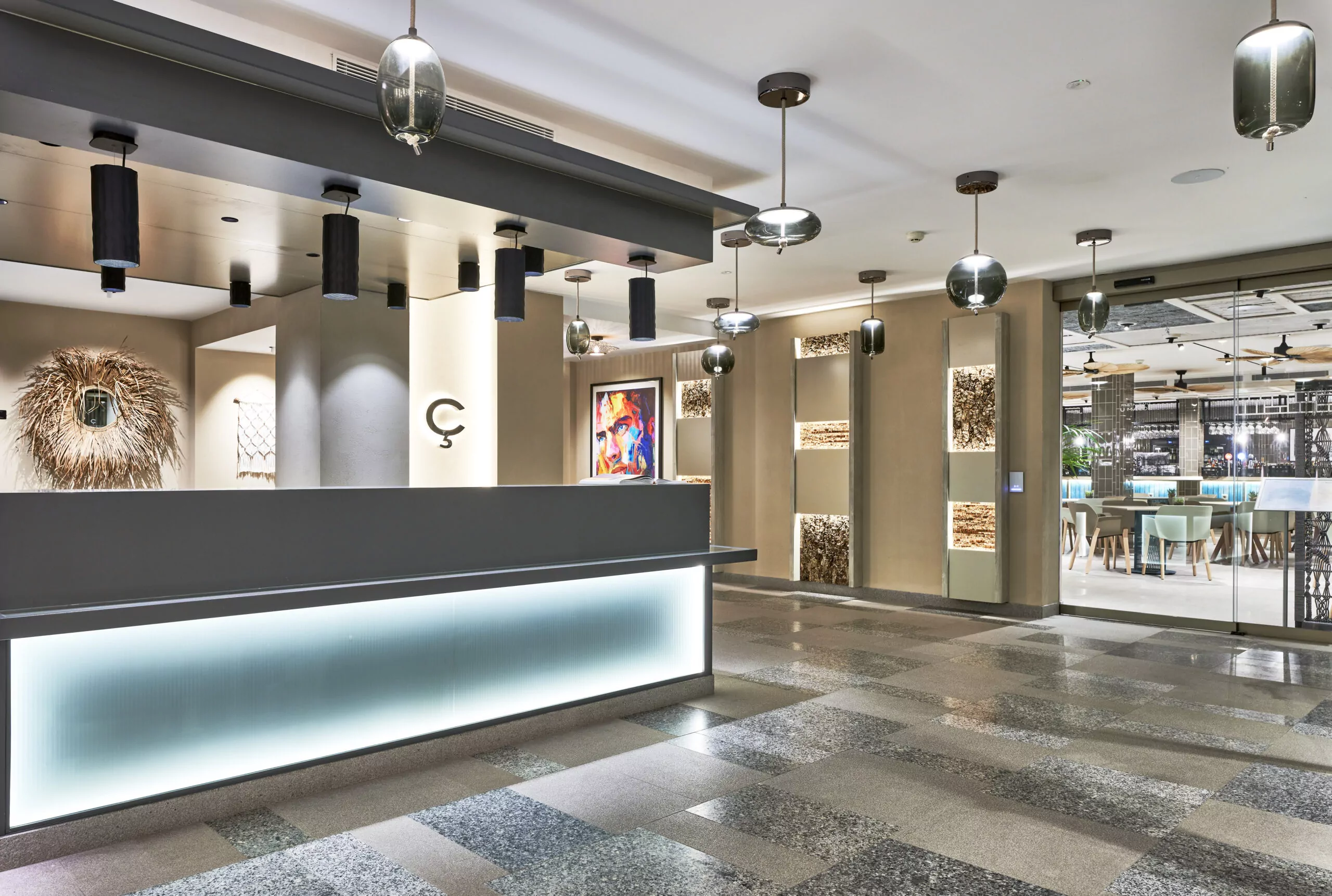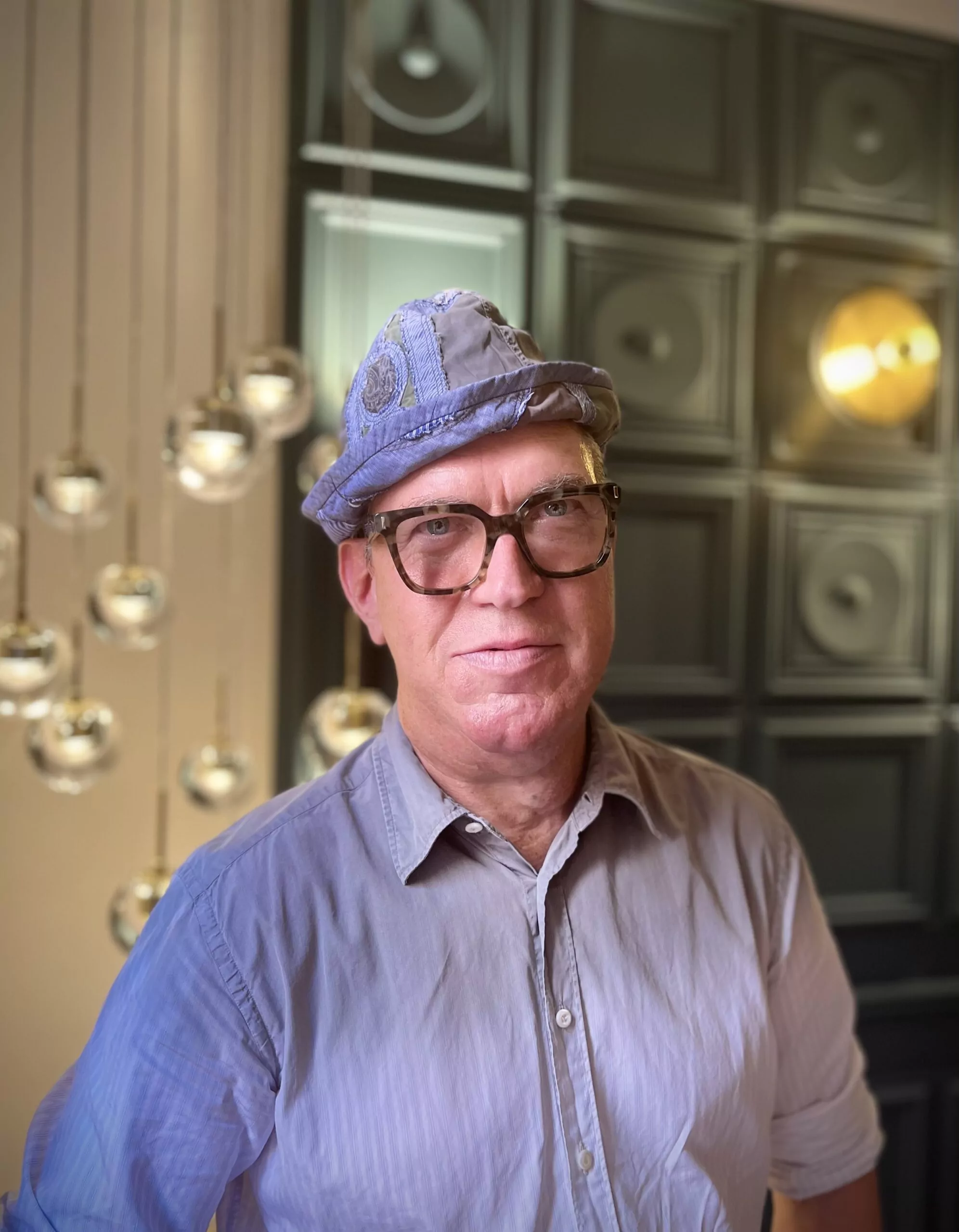Magnus Ehrland: from fashion design to the development of interior design projects in five-star hotels.
For the Hotel El Vicenç project we had the pleasure of collaborating with Magnus Ehrland, who was in charge of both the interior design and the lighting style.
He began his professional career as a fashion designer. In fact, it was thanks to his connection with the international fashion brand Diesel that he got his first job as an interior designer at the Pelican Hotel in Miami Beach. Magnus explains that his early curiosity and taste for those aspects related to construction and craftsmanship has had a lot to do with his professional development.
We learn more about him in this brief interview.
What was your inspiration for El Vicenç? To what extent has lighting design contributed to express your design concept?
Every corner must have a purpose. I never leave any space unattended, and lighting is part of that. The design process is complex when you want to do something special.
I did some research. I found out that the hotels built in the area were from the 1950's or 1960's. That was when a large part of the population had the opportunity to travel abroad by plane for the first time. I wanted to express that excitement of traveling and landing in a new climate and culture, with all that that means.
Overall, El Vicenç has some touches of the 50's and 60's, but with a modern component, along with special details to bring guests back to their childhood and/or fond memories of the past. I love to play with objects and give them new life by putting them in a new context. This is my interpretation of a modern Mediterranean lifestyle in this Cala.
For me, lighting and furnishings have to balance each other. I think hotels today are much more inspired by the true feeling of home when, a few years ago, it was the other way around.
I am impressed and proud of how well El Vicenç has adapted to the market.

We know that you have used some luminaires symbolically in some parts of the hotel, could you explain it to us?
There are symbols everywhere. I use luminaries to express ideas. For example, I wanted to represent the concept of a timeline from the moment you enter the parking lot until you start climbing the stairs.
Another example can be found in the spa, where above the elongated pool there are rows of industrial-style pendants. I wanted them to provide a curious and surprising element in that environment, and to contrast with the typical Mallorcan stone wall in the background. Again, going back to my earlier concept of childhood, mid-century style, and playing with objects that may be familiar.
You have a very eclectic style, what is your approach to mixing different light fixtures in a room?
I think you can mix basically everything, if you know what you are doing and you do it with style and taste. It sounds so simple and to me it's obvious, but unfortunately there are many examples that show the opposite.
I have always been very curious about lighting, so I have tried to find out as much as possible about it. I know there is a solution for almost everything. Whenever I'm told something isn't possible, I try to find out why not.
That said, I am aware that the lighting in a hotel must meet different target needs. To that end, I balance both decorative and technical luminaires in a very detailed way. For example, I reject the general idea that most garages are governed by as white spaces, into which a standard cold-light luminaire is incorporated. The same goes for emergency stairwells, where the space is conceived as purely functional in terms of lighting.
What do you think a good lighting design solution for a hotel room should look like?
It should have a good extension and be flexible to suit both more functional tasks and the comfort sought by the guest. It should take into account contrast and, of course, ambience. Dimming systems help a lot when it comes to creating different scenarios. One needs to think about the difference between day and night.
I like to create systems, not necessarily boring ones. Experiential systems.
How important is the lighting designer position to you, and would you consider more collaborations with such professionals?
Of course. I think all creatives can learn from each other. It's not realistic to think that one person can do everything. All aspects in the construction field are equally important and it's great when we can learn from each other. No one should be afraid or ashamed to ask for help.
Magnus Ehrland, who is returning to fashion for a while, confides that working with Worldlight for the El Vicenç hotel was easy because of the agility of the design team to find alternative luminaires with better performance from a wide range of brands.
...................................................................
Magnus Ehrland: from Fashion Design to the development of Interior Design projects in five-star hotels.
We had the pleasure to meet and collaborate with Magnus Ehrland in El Vicens Hotel project, who oversaw its Interior Design as well as its lighting fixtures style.
He started his professional career as a Fashion Designer. In fact, it was thanks to his link with the international fashion brand Diesel that he got his first job as an Interior Designer for the Pelican Hotel in Miami Beach. Magnus states that his early curiosity and taste for those aspects related to construction and craftmanship had a lot to do with his professional development.
We find out more about him in this short interview.
What was your inspiration for El Vicenç? To what extent has the Lighting Design contributed to expressing the design concept of it?
Every corner should have a purpose. I never leave any space unattended, and lighting is part of it. The design process is complex when you want to do something special.
I did some research. I found out that the hotels built in the area were from the 50's or 60's. It was back then when people started taking flights for the first time. I wanted to recreate that thrill of traveling and that excitement of landing in a new climate and culture, with all that implies.
In general, El Vicenç has some touches from the 50s and 60s, but with a modern twist, together with special details to bring guests back to their childhood and/or fond memories from the past. I love playing with objects and giving them a new life by putting them into a new context. This is my interpretation of a modern Mediterranean lifestyle in this cala.
For me, lighting and furniture have to be balanced. I think that today's hotels are much more inspired by a true home feeling whereas, a few years ago, it was the other way around.
I am impressed and proud of how well El Vicenç has adapted to the market.
We know that you have used some luminaries symbolically in some parts of the hotel, could you tell us how?
There are symbols everywhere. I use luminaries to express ideas. For example, I wanted to represent the concept of a timeline from the moment you enter the parking lot until you start walking up the stairs.
Another one can be found in the spa, where above the pool are rows of industrial-style pendants. I wanted them to provide a curious and surprising element in this environment in contrast with that typical Mallorcan stone wall at the background. Once again, going back to my previous childhood concept, to mid-century style, and playing with objects that can result familiar.
You have a very eclectic style, what is your approach when it comes to mixing different lighting fixtures in a room?
I believe you can basically mix anything, if you know what you're doing, and you do it with style and taste. It sounds so simple, and it's obvious to me, unfortunately there are many examples that show opposite.
I have always been very curious about lighting. That is the reason why I have tried to find out as much as possible about it. I know there is a solution for almost everything. Every time I am told that something is not possible, I try to find out why it is not.
Having said that, I am aware that lighting in a hotel needs to satisfy different target needs. To do so, I balance both decorative and technical luminaires in a very detailed way. For example, I reject the general idea that most parking areas are conceived with. Just white spaces lightened by standard cold luminaires. This also happens in emergency staircase areas, which are thought to be just functional in terms of lighting.
What do you think a good Lighting Design solution for a hotel room should look like?
It should spread smoothly and be flexible so it can both for functional performance and for that comfort guests are looking for. Contrast, and of course ambiance, need to be considered. Dimming systems are helpful when creating different lighting scenarios. One needs to think about the difference between day and night.
I like creating systems, not necessarily boring ones but experiental systems.
How important is the position of Lighting Designer to you? Would you consider more collaborations with such professionals?
Of course. I believe that all creatives can learn from each other. It is unrealistic to think that one person can do everything. All aspects in the field of construction are equally important and it is great when we can learn from each other. No one should be afraid or ashamed to ask for help.
Magnus Ehrland, who is going back to fashion for a while, confesses that working with Worldlight for El Vicenç Hotel made things easier thanks to the efficiency of the team in finding alternative lighting fixtures with better performance in a wide range of brands.



